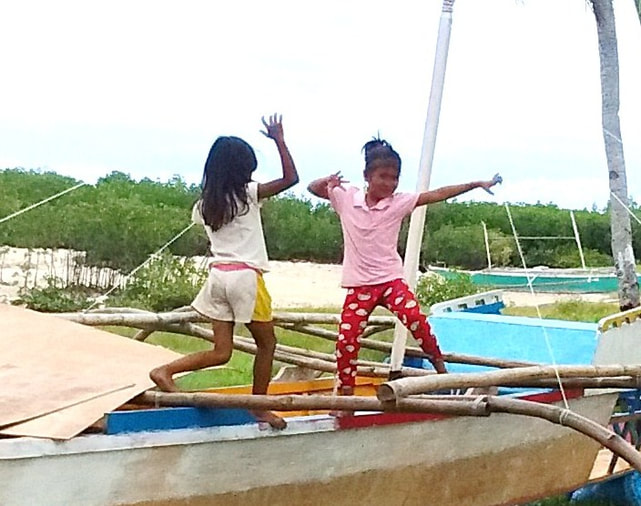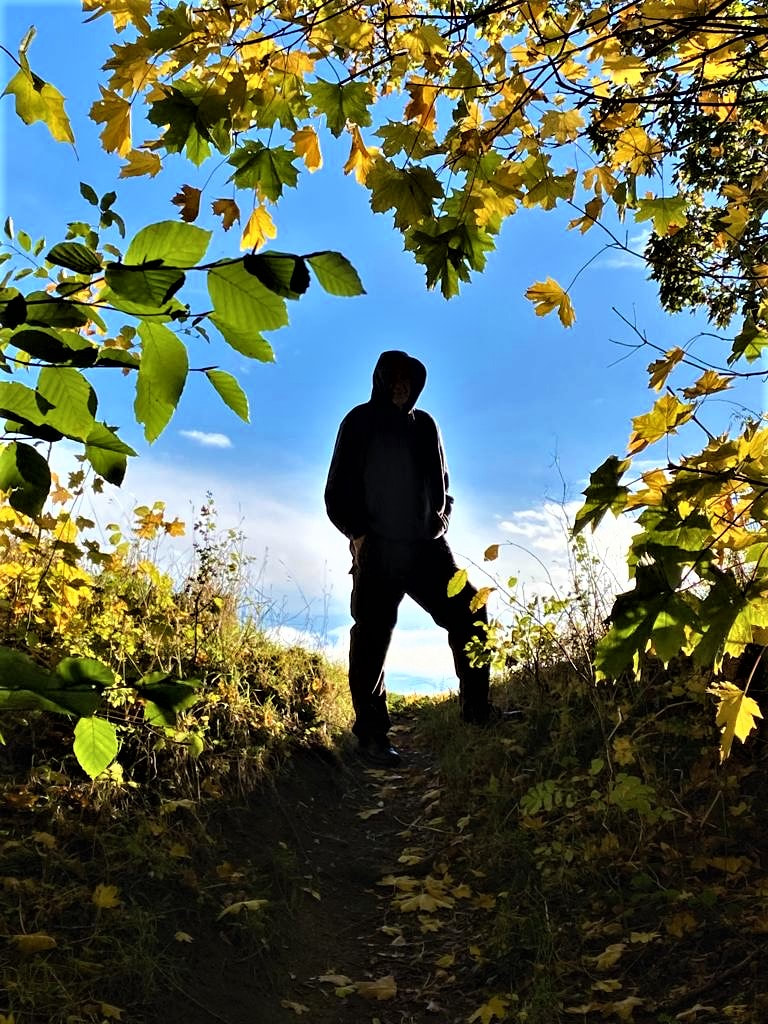|
'The brain is constantly searching for patterns to make sense of its experience. Inside your brain is the story of you.' (Nick Marson) We all have a story. As we look back over our lives, some people, relationships, events and experiences really stand out. Everything else fades out of memory, as if into an invisible backdrop. We subconsciously draw lines between those things that stand out to us, like dot-to-dot, and the picture that emerges becomes, for us, our life story. In this sense, the story is always a summary, an edited version, a glimpse. What stands out is often that which carried strong emotional content for us, or represented who or what really mattered to us at the time, or resonates deeply in some way with who or what really matters to us now, or with how we are feeling now – often out of awareness. In this way, the story-past we tell ourselves may well reveal someone or something important about our story-now. A story is one possible construct-configuration. Imagine, for instance, if we were to work with a client in such a way that raises the not-noticed into view, or that enables them to explore the same people, relationships, events and experiences from different vantage points, or to surface and evaluate the underlying hopes, fears, beliefs, values and cultures they could signify. What then becomes possible? How can I help you work with your story? Get in touch! [email protected]
22 Comments
Well-being and resilience are hot topics in the world of work at the moment. The Stockdale Paradox offers a useful psychological outlook and stance. How do you handle faith, facts and hope? ‘Retain faith that you will prevail in the end, regardless of the difficulties and, at the same time, confront the most brutal facts of your current reality, whatever they may be.’ (Stockdale Paradox) Someone commented recently on my ‘relentless optimism that everything will work out in the end.’ They saw this as a principle that guides my decision making, drawing on my faith as a follower of Jesus. I was a bit taken aback, partly because I had read in Jim Collins’ book, Good to Great some years ago that optimism can lead to naïve passivity in the face of challenge. On further exploration, it became clear that they meant I appear un-phased by some situations that could leave other people shaking. It’s as if I am open to, look out for, the possibility in, the opportunity in, what is. Sometimes. This is quite different to a kind of positive thinking that says things like, ‘You can be whatever you want to be’, as if personal, cultural and contextual constraints don’t exist, or, ‘Don’t worry, you’ll be fine’ – when clearly you won’t be. Collins talks about the importance of confronting the brutal facts; that is, of actively seeking out and facing what could well look and feel like the opposite to how we would prefer things to be. In contrast to optimism or pessimism, it’s a kind of relentless realism. It demands honesty, courage, humility, and a hopeful outlook to avoid falling into paralysis or despair. Achieving this perspective, attitude and stance isn’t always as easy, however, as it may sound. Psychodynamically-speaking, leaders, teams and organisations often develop subconscious and highly-effective defence mechanisms that protect them from dealing with issues that could feel threatening or anxiety-provoking. As a consequence, it can mean that we see what we want to see, hear what we want to hear and filter everything else out – without even knowing it. This may create both risky blind spots (what we can’t see) and dangerous hot spots (what we avoid facing). To add to the complexity, according to Gestalt and social constructionist research, leaders, teams and organisations can become so focused-fixated on specific issues they consider most important that they inadvertently exclude wider perspectives or dimensions – again without realising it. This influences what they perceive as key, what they consider to be the brutal facts in relation to it, what they believe the options are and, therefore, what they decide to do in response to it. It’s as if the narratives we create function for us as as-if realities. How do you handle faith, facts and hope? How can I help you build well-being and resilience? Get in touch! 'In ‘Leadership and Self-Deception’ (2006), the Arbinger Institute highlighted the subtle, subconscious and serious art of deceiving ourselves and others in organisations...without realising it. This short article says a bit more about this strange risk phenomenon and invites your insights and ideas on how to address it! Is everything we know wrong?' In 2010, the BBC released a ground-breaking Horizon documentary entitled, ‘Is Everything We Know About the Universe Wrong?’ It set out to question and challenge current, fundamental and widely-held scientific beliefs about the universe, particularly in relation to ‘dark matter’, ‘dark energy’ and ‘dark flow’. Perhaps the most radical dimension to the investigation was its willingness to wonder. Are our hypotheses, our cosmological theories, so convincing to us, so self-evidently true for us, that they blind us, close down uncomfortable questions, act as powerful psychological-cultural filters? It coincided with the release of a plethora of popular books (e.g. Chabris & Simons’, The Invisible Gorilla, 2011; McRaney’s, You are Not so Smart, 2012) that set out to reveal and challenge our cognitive and cultural limitations and distortions. An underlying, recurring theme is that self- and group deception act in stealth mode. We are most deceived when we don’t know we’re deceived. We face the same challenges as leaders, coaches, OD or trainers: how to practise reflexivity/praxis ('critical reflective practice') whilst enabling other people, groups and organisations to do so too. Thomas Aquinas offers useful psychodynamic insight here. If we face an unresolved question that captures our interest and imagination, it sets us off on a quest, a journey, of discovery. If, however, we find an explanation or solution that we find convincing, the mind comes to a standstill, our thinking comes to a halt. This is a reason why transformational teachers such as Jesus, Buddha and Socrates are famous for posing high order, high quality, questions, puzzles or paradoxes – searching, evocative, provocative stimuli that leave us deeply restless until, if possible, we find resolution. So, some food for thought: As leader, coach, OD or trainer, what are you, or your clients, assuming or taking at face value? When have you, or they, leapt to a conclusion too soon, treating an open question as if it were a closed one? What rules, principles or received wisdom (e.g. ‘good practice’) do you, or they, consider obvious or sacred? When do you, or they, shut down questions or avenues of inquiry because they feel too difficult or sensitive to raise? Which tricky issues, experiences or conversations are you, or they, avoiding? How can you get self-deception out of stealth mode? Can I help you develop critical reflective practice? Get in touch! [email protected] I will facilitate a leadership meeting tomorrow. One of the questions I will pose is: ‘Who or what has inspired you most in 2016 – and why?’ We are, after all, approaching the end of this year and it can be valuable to pause in the midst of all the busy-ness of business as usual to reflect, notice, learn, thank and celebrate. At the same time, as we reflect on the why question, it will touch and reveal our underlying beliefs and values. It’s something about who and what matters most to us in life.
Our responses to the inspire dimension will also say something important about ourselves and the cultures we inhabit – although these often lay out of awareness, more implicit to us than explicit. Psychodynamic theory refers to this phenomenon as projection. It’s as if we sometimes notice qualities in others that we don’t see in ourselves. I may project these qualities outwards and see the image that I project…and yet I attribute what I see to you rather than to me – or to us. That said, however, it can be and feel truly life-giving to gaze, even for a moment, at the amazing qualities of people and things that inspire us. To be inspired is to be impacted. Something shifts, something changes. It evokes and energises a dynamic within and between us. This is the influence of role models. It is something we do well to pay attention to as leaders, coaches, OD and trainers too. As one colleague put it: ‘We are always influencing – but not always in the way we hope!’ Without doubt, the person who has inspired me most this year is a young woman, a Filipina, who gives her life, day-by-day, selflessly and unselfconsciously to love and care for others. To meet, to see, to feel, the way she lives and engages with the people around her, especially the poor, has been nothing short of breath-taking for me. It has challenged and inspired me deeply to be a more loving and outward-focused person. So…who or what has inspired you most in 2016 – and why? Ever had one of those situations where you have said or done something entirely innocently and the person or group’s response seems totally disconnected to what you said or did – or completely out of proportion to it? It can feel like you have stepped on a hidden landmine. It can take you by surprise and can leave you reeling from the impact. It can feel hurtful, confusing and disorientating. What is going on here? What can you do to make sense of it and to deal with it?
There are some really useful insights we can draw on from fields including psychodynamics, Gestalt, social psychology, social constructionism and systems thinking. They are all interested in human relationships, what happens when we interact with each other and why. I’m going to share a couple of insights here, briefly, because I think they can be very helpful for leaders, OD, coaches etc. In fact, anyone who encounters people, works with people, is keen to build good relationships. Firstly, we experience everything and everyone we encounter through a psychological-cultural filter. The filter is, essentially everything and everyone we have experienced in the past, how we have felt about it and what sense we and others have made of it. This means that a person who, say, appears to overreact to you is encountering you through their own filter. The filter subconsciously influences their assumptions, perceptions etc. It may be about you…but it isn’t only about you. Secondly, no encounter takes place in a vacuum. Even as you read this, you aren’t doing so in a bubble. The stuff that is going on around us, which includes things in our lives and work here and now as well as things we carry from the past and our anticipated futures, influences what we notice, what we value, what we prioritise, what we enjoy, how we cope etc. in any given moment. So, the ‘overreacting’ person? Acknowledge they have a backstory. Breathe, be open; ask, listen. Jackie LeFevre of Magma Effect is an inspiring and thoughtful guru in the values-related field. One of the things Jackie talks about is the importance of exploring the values and beliefs that lay behind people’s actions and behaviours. Two people could behave the same way but with very different reasons for doing it. Dave believes that people should arrive at meetings on time. For him, it’s about ensuring that time spent at meetings is efficient and effective. Sandra also believes it’s important to arrive on time. For her, it is about showing personal respect for colleagues in the room.
Why is this important? Covey in The Speed of Trust observed that, ‘We judge ourselves by our intentions and others by their actions.’ The risk here is that I assume your intention from your behaviour then respond and relate to you as if my assumption (that is, my own belief about you in that situation) is true. What is more, we tend to notice things that confirm and reinforce the belief we already hold and don’t notice things that would challenge or contradict it. All kinds of misunderstandings can occur and these can prove limiting or damaging to relationships. This tendency is exacerbated if we are feeling tired, pressured or stressed. Somebody walks past my desk who normally stops and speaks to me. This time, they don’t speak. In fact, they don’t even look at me. I begin to hypothesise. If I’m already feeling anxious about the relationship, I may start to dream up an elaborate fantasy: ‘I’m sure they’re angry with me.’ ‘It’s because they didn’t like that email I sent.’ It’s a classic example of cognitive distortion. If we notice we are doing it, e.g. if we think we are reading the other person’s mind, it can really help if we simply stop and…breathe. I discovered a useful ‘3 Hypotheses Technique’ in Latting & Ramsey’s Reframing Change that can be used to surface such assumptions and open up alternatives. The first step is to take note of what we assume the person’s action or behaviour means. The second is to assume the person has a positive intention. The third is to assume the person is being driven by external circumstances. If we are able to entertain the possibility that more than one of these could be true, it can create sufficient psychological and emotional shift to enable us to respond with far greater reality and freedom. It can be one of the most painful of human experiences, especially if compounded by rejection or betrayal. But why is loss so difficult, whether it be loss of a person, a relationship, a job, a home, our health? Thinking back, I remember vividly when I heard the news of Princess Diana’s death. I have never been a royalist and had no interest whatsoever in the UK royal family. Yet still, somehow, I felt an odd sense of grief, of bereavement, that made no rational sense to me at all. Susie Orbach, a psychotherapist and writer who applies psychodynamic insights to social and political phenomena, explained this well. Although I had no relationship with Diana, she had nevertheless been part of the backdrop, the fabric, of my life so that when she died, it felt like something of that fabric had been lost, torn away. The subconscious effect of this was amplified and intensified by the social, cultural effects of experiencing that loss alongside others. At another level, this feeling of loss also echoed deeply with previous losses in my life, e.g. when I moved home as a child, when I lost a precious relationship. These combined insights enabled me to understand that Diana’s death carried symbolic significance (some part of my life would never be the same again) and psychological resonance (echoes of previous experiences of loss). I’ve learned that these same dynamics are present when working with people, teams and organisations too. So, if you’re a leader leading change, an OD practitioner facilitating groups through transition, a coach enabling a person to move deeper and move forward: look out for loss – sometimes masked as resistance, sometimes as denial, sometimes as loss of energy and hope. You can’t always know or predict what change may represent symbolically or trigger psychologically. Be present, be patient and be willing to persevere until the person, the group, is able to see and feel light again. I unexpectedly found my eyes 'sweating' as I first saw my Twitter feed this morning. First shock. Deep breaths. Then disbelief. Then numbness. Then fighting back tears. Stepping onto the train in a daze. Lost for words. David Bowie is dead.
Tributes pour in from across the world to a man, an artist, who touched so many people’s lives. From my earliest teens until now, so many life memories are etched with his music, his imagery, his artistry. Words, often veiled in mystery, expressing hopes, fears, dreams – life. I didn’t know Bowie personally. Yet for those who loved his gift to the world, his astonishing talent, he became woven intimately into the fabric of our lives. His death is a sharp tearing of the fabric, a feeling that something of our own lives has died with him. So public and personal grief touch here, hand in hand. This evening, this day, we mourn the loss of an extraordinary man. I know: tomorrow the news and our lives will move onto different stories. Yet, in our hearts, something - somehow - will have changed. Participants are arriving at the training room. I’ve never met them before and one appears very loud and confrontational. I’m taken aback, wondering how I’m going to work with this person in the group. I mention this to my co-trainer and he responds calmly, ‘Everyone has their own way of dealing with anxiety’. This was many years ago now but his words still resonate when I’m facilitating training events.
I’m back in a training room again. This time, more recently. It’s a group of senior leaders from an organisation and one of the participants repeatedly questions the trainers’ credentials as if to imply: ‘I don’t know if you have what it takes to do this well.’ He avoids taking part in activities by discussing and debating them rather than doing them. His behaviour feels resistive, disruptive, difficult. ‘Everyone has their own way of dealing with anxiety…’ OK, let's hypothesise: this man is among peers, concerned about how his performance will be perceived and evaluated. His organisation is going through leadership changes and he feels vulnerable. A subconscious voice gnaws at him from within: ‘What if I don’t have what it takes to do this well?’ ‘What if this exposes how inadequate I am?' He projects his insecurity onto the trainer and avoids activities as a defence against anxiety. At the end of the day, the co-trainer and I leave feeling drained. It’s an unusual feeling and we wonder what we are carrying from the group. The group itself feels draining, drained. After all, it takes huge amounts of energy to hold up a front, to mask and subdue anxiety, to contain it. Perhaps the group’s behaviour opens a window into its wider organisational reality: ‘We don’t feel safe; this organisation doesn’t feel safe.’ I've found this psychodynamic perspective to be valuable for trainers, coaches and leaders alike. It poses questions such as: ‘What is really going on here?’, ‘What is what happens within the room telling us about what may be happening outside of the room?’, ‘What do participants in this group need to feel sufficiently safe to work together?’, ‘What do I need to recognise and work well with complex group dynamics?’ What is your experience of dealing with group anxiety? What have you noticed and experienced? How have you worked with it? I'll be interested to hear more! What are your favourite coaching questions? I often use 3 that I’ve found can create a remarkable shift in awareness, insight and practice, especially in team coaching. I’ve applied them using variations in language and adapted them to different client issues, opportunities and challenges. They draw on principles from psychodynamic, Gestalt and solutions-focused coaching and are particularly helpful when a client or team feels stuck, unable to find a way forward.
* ‘What’s your contribution to what you are experiencing?’ * ‘What do you need, to contribute your best?’ * ‘What would it take..?’ Client: ‘These meetings feel so boring! I always leave feeling drained rather than energised.’ Coach: ‘What’s your contribution to what you are experiencing?’ Client: ‘Excuse me?’ Coach: ‘What do you do when you feel bored?’ Client: ‘I drift away, look out of the window.’ Coach: ‘What might be the impact on the wider group when you drift away?’ Client: ‘I guess others may disengage too.’ Coach: ‘How does the meeting feel when people disengage?’ Client: 'Hmmm…boring!’ Coach: ‘What do you need to contribute your best?’ Client: ‘It would help certainly if we could negotiate and agree the agenda beforehand, rather than focus on things that feel irrelevant.’ Coach: ‘So you want to ensure the agenda feels relevant to you. What else?’ Client: ‘If we could meet off site and break for coffee from time to time, that would feel more energising.’ Coach: ‘So venue and breaks make a difference too. Anything else?’ Client: ‘No, that’s it.’ Client: ‘I don’t think I can influence where and how these meetings are held.’ Coach: ‘It sounds like you feel quite powerless. How would you rate your level of influence on a scale of 1-10?’ Client: ‘Around 3’. Coach: ‘What would it take to move it up to a 6 or 7?’ Client: ‘I guess if I showed more support in the meetings, the leader may be more open to my suggestions.’ Coach: ‘What else would it take?’ Client: ‘I could work on building my relationship with the leader outside of meetings too.’ These type of questions can help a client grow in awareness of the interplay between intrapersonal, interpersonal and group dynamics, his or her impact within a wider system, what he or she needs to perform well and how to influence the system itself. They can also shift a person or team from mental, emotional and physical passivity to active, optimistic engagement. What are your favourite coaching questions? How have you used them and what happened as a result? |
Nick WrightI'm a psychological coach, trainer and OD consultant. Curious to discover how can I help you? Get in touch! Like what you read? Simply enter your email address below to receive regular blog updates!
|








 RSS Feed
RSS Feed